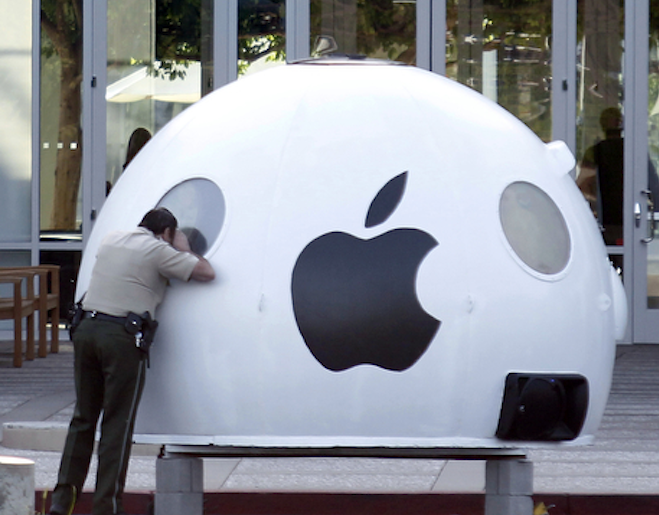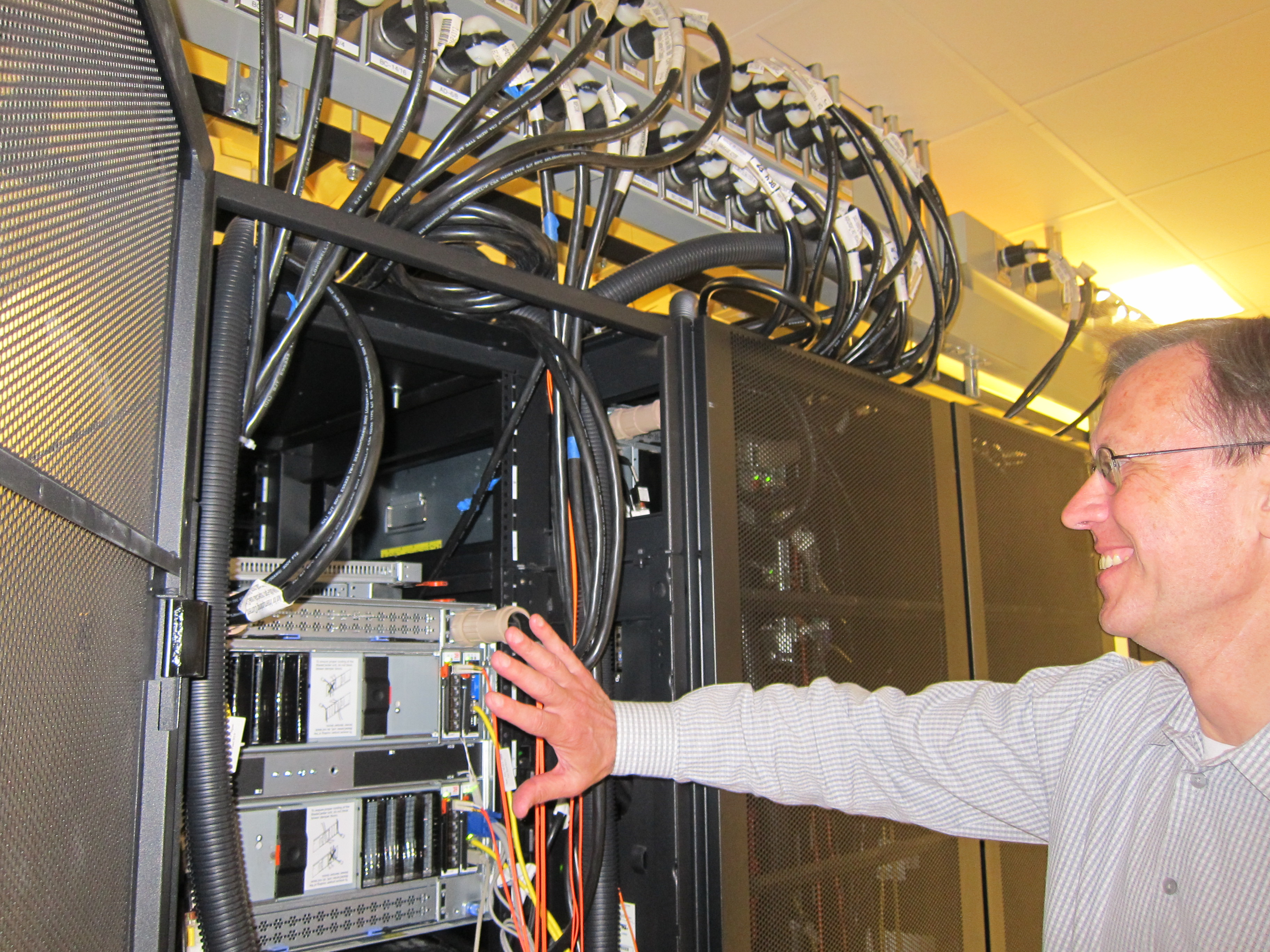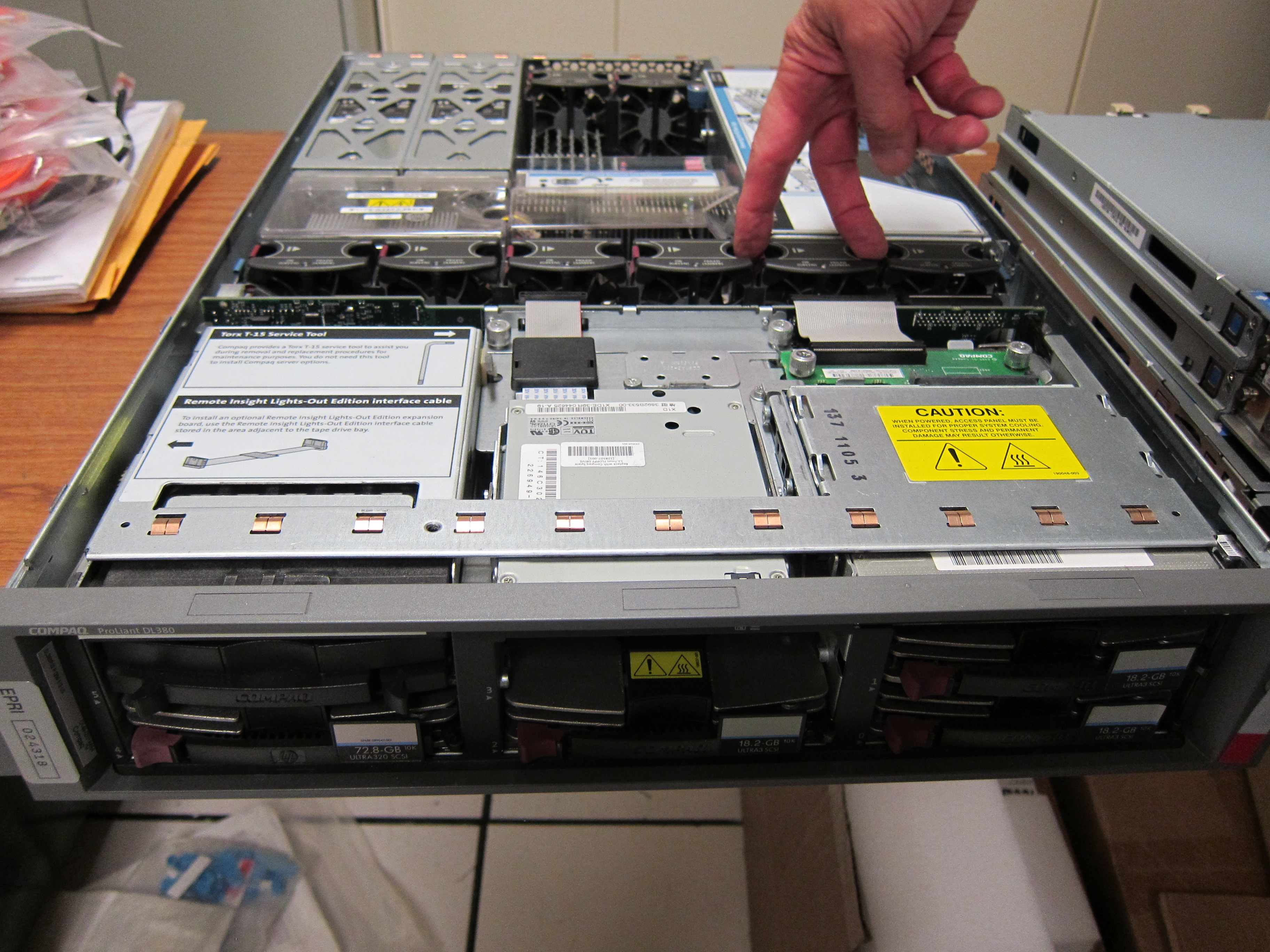Did the Greenpeace “Clean our Cloud” campaign nudge Apple toward a stronger environmental stance?

Since April, the environmental organization Greenpeace has had a bull’s-eye on Apple in its campaign to clean up the Internet “Cloud” that stores our music, apps, and photos. It’s accused Apple of using high-carbon “dirty fuels” like coal to power its new data center in North Carolina and has used dramatic pranks and slick videos to get consumers involved.
Last week, members of Greenpeace barricaded themselves in a giant iPod at Apple’s Cupertino headquarters and dressed as giant iPhones to demand a cleaner iCloud. Two days later, in a rare demonstration of transparency, Apple released a detailed statement explaining how its new data center would be 100% green. The whole drama made me curious to learn how the Cloud’s power source and growth could impact the environment.
So I paid a visit to Dennis Symanski at the Electric Power Research Institute (or EPRI) in Palo Alto. He’s an expert in energy efficiency and power delivery. He described the Cloud as a giant system of servers in remote data centers that store your electronic data, and estimates the Cloud uses between 2-3% of electric power consumed in the United States.
That may not sound like much but Symanski says that “small” percentage amounts to about 92 Billion kilowatt-hours per year – enough to power 7.6 million homes, double that of sprawling L.A. County.
He says it’s impossible to say exactly what the Cloud’s carbon footprint is, but some experts say that consolidating data in vast data centers can result in greater efficiencies and a smaller footprint than traditional computing.

Symanski invited me to visit a small data center he oversees at EPRI and I saw what energy hogs these “server farms” can be. Fans run 24/7 to keep the pizza box shaped servers, and the chips inside them, from overheating. There are so many fans in this 187 kilowatt data center, even Symanski doesn’t have an accurate count.
This one is a tiny fraction of the 20 megawatt data center Apple recently built in North Carolina to house its iCloud.
But it’s more than the energy guzzling that concerns Greenpeace. It accuses Apple of relying too much on “dirty” energy like coal from local utility Duke Energy and says Apple is misleading the public about its future iCloud power demands. The campaign is a lesson in effective social media and includes upbeat Apple-inspired videos featuring trendy young people doing cool things with their Macs and iPhones and then getting showered with coal dust.
I spoke with Greenpeace senior IT analyst, Gary Cook who explained the rationale of its “Clean our Cloud” campaign.
“If Apple, along with other IT companies, went to Duke (Energy) and said what you’re selling isn’t good enough…we don’t want to be buying coal from mountaintop removal, we want clean energy,” he says. “Duke would have to listen and that would actually drive green power on the grid for everyone.”
But not everyone is thrilled about the Greenpeace campaign and publicity stunts. Some Apple fans have accused Greenpeace of “doing a Mike Daisey” on Apple. Daisey is the commentator who invented stories to highlight dangerous working conditions at Apple’s Chinese factories.
Some say Greenpeace is asking too much of the world’s most valuable company.
“Before you know it we’ll be asking them to feed the hungry also,” says Sandeep Grag, a Silicon Valley engineer.
Gary Cook says Greenpeace has no interest in misrepresenting the facts. “We’re just trying to shine a light on who’s doing well and who needs to do better as they grow their cloud,” he says.

And the cloud is growing rapidly. The more we share online, the faster the cloud must expand. According to research by Cisco Systems, by the end of 2011, 20 households created as much Internet traffic as the entire Internet in 2008. IT energy experts say the cloud will double in the next 3 to 7 years.
That’s one of the reasons Greenpeace is targeting companies that rely on the cloud. Its “Unfriend Coal” Campaign against Facebook led the social network to commit to clean energy for its future data centers. The environmental group also praises Google’s clean energy leadership for investing millions in solar and wind power. In recent weeks, Greenpeace has also targeted Microsoft and Amazon, demanding they use renewable energy to power their Clouds.
Yet despite Apple’s announcement last week, Greenpeace says the smartphone maker can still do more to ensure the cloud gets cleaner as it grows and wants to see a data center siting policy that prioritizes clean energy.
“They have been transformational in almost every other sector they’ve touched and now we need them to accept that challenge …and drive transformation in the energy sector,” says Cook.
On May 17, Apple explained how its new data center will be 100% clean powered by the end of 2012. It will produce 60% from onsite Sunpower solar arrays and Bloom Energy fuel cells, said to be the largest private installations of their kind in the U.S. The remainder will come from local renewable energy purchases. It promises: no more coal.
In a section entitled “Accountability and Transparency” Apple even invites the public to follow its clean energy production at the North Carolina Renewable Energy Tracking System.
It would be naive to conclude that the Greenpeace campaign forced Apple to be greener overnight. These clean energy plans have obviously been in development for many months. But it does look like the campaign helped nudge Apple towards greater transparency in its environmental leadership. That’s something that should please all environmentalists.
An Apple spokeswoman points to the company’s new LEED Platinum data center in North Carolina which she says will be the greenest in the world. Or as Steve Jobs might have said, “insanely green.”
Hear the entire radio story, airing May 23 on The California Report.
One thought on “Trendspotting: Shrinking the Carbon Footprint of the Cloud”
Comments are closed.

You talked about all the energy used by datacenters, but didn’t talk at all about how much energy they save by doing things better, smarter, once, etc. I think that makes you guilty of the first sin of greenwashing, doesn’t it? BTW, the Smart 2020 Report says they save more than 5 times the energy that they use.